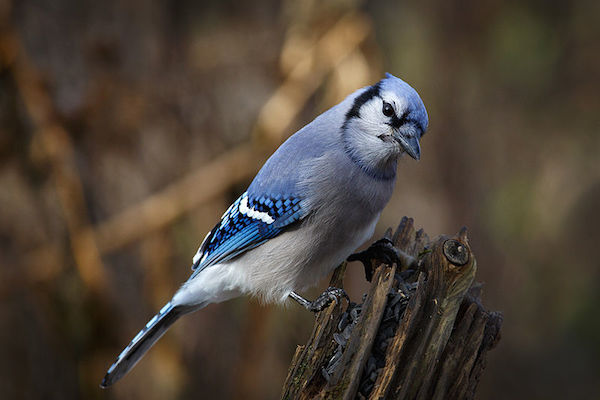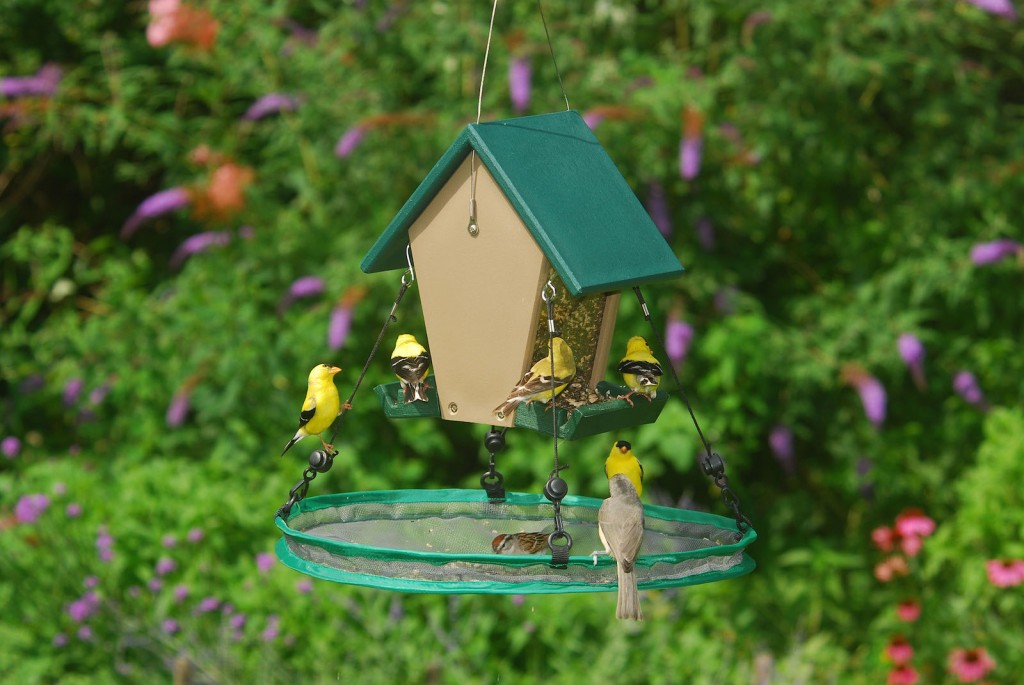
We’ve all seen it happen at one time or another. A small chickadee is quietly and gently eating some seed from your feeder when out of nowhere a noisy Blue Jay comes swooping in and scares off the chickadee.
It’s a dog eat dog world out there (or should we say bird eat bird), but you don’t have to stand for larger more aggressive birds scaring off the smaller more gentler species.
If you’re having a problem with bully birds, here are some ways you can discourage them.
Types of Bully Birds
When a bird feeder is crowded, sometimes birds will fight with each other to get a space at the feeding port. This doesn’t necessarily mean the victor is a bully bird. Bully birds will regularly and aggressively push out other birds to feed. You know you have a problem when several bully birds are eating at your feeder so much that your other birds aren’t getting any food.
The species you might already suspect as being bullies are the most frequent offenders. Here’s a partial list.
 Crows
Crows- Pigeons
- Blue Jays
- Grackles
- House Sparrows
- Cowbirds
- Starlings
- Doves
These birds typically spend a fair amount of time at feeders building up their cache or sometimes a flock of birds will mob feeders.
If you have bully birds frequenting your feeder, here are some things you can do.
1. Get feeders with small perches
From the list of offenders, you can see that the birds are usually on the bigger side. Feeders with smaller perches that can only accommodate birds of a certain size are an easy way to get rid of larger birds like jays and grackles. Many tube feeders have the ability to shorten perches if needed.
2. Opt for collapsible perches
Along the same lines as the previous suggestion, a collapsible feeder will accomplish the same thing, but you have more control over it. Many squirrel-proof feeders feature collapsible perches that will give way when a certain amount of pressure is put on it. These can typically be adjusted for squirrels only or even larger birds. An example of one of these feeders is the Vari-Crafts Bouncer Squirrel-Proof Feeder.
3. Put a cage around the feeder
Many of the solutions for squirrels also work great for bully birds. The space between the bars of a cage feeder is just big enough to allow most birds access while being too small for squirrels and bully birds. Check out some of the wire cage feeders available.
 4. Use seed catchers
4. Use seed catchers
One of the biggest factors for drawing in bully birds is the mess underneath feeders. Since many of the bully birds feed off the ground, simply adding a seed catcher beneath your feeder will decrease the mess. (It’ll also have the added benefit of keeping your yard tidy and potential rodents far away.)
5. Do away with tray feeders and ground feeding
As previously stated, bully birds are more likely to feed off the ground and tray feeders/ground feeding provide access to easy food. By removing these types of feeders, even for a little while, the birds will move on to a more accessible food source. You can put them back up later.
6. Practice selective feeding
Some bully birds can be surprisingly picky eaters. They prefer corn, millet, sunflower seeds, and cheaper food. Foods that bully birds usually don’t like include safflower seeds and Nyjer seed. Fortunately, these are two types of foods that smaller birds really enjoy.
7. Use upside down suet feeder
Suet is a favorite food of many bully birds, but an easy way to stop them from eating all the suet is to use an upside down feeder. Woodpeckers, unlike starlings, have the ability to eat while hanging upside down, so getting a specially designed upside down feeder will leave bully birds high and dry.

 Crows
Crows

12 Comments
Absolutely!
We have a very aggressive red headed woodpecker attacking other birds. Actually had one down on the ground! What do we do?
The black birds are learning how to hang from my upside down feeder. I have tried everything.